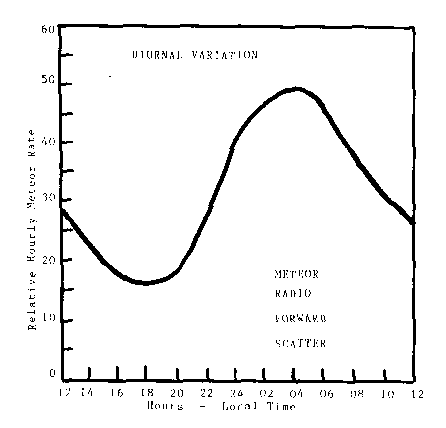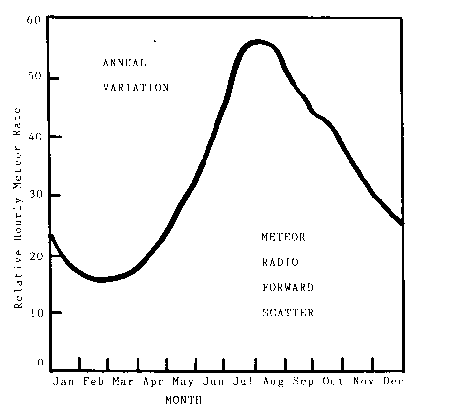Meteors: The Environment
The meteoroid influx into the Earth's space environment is not constant. It varies throughout the day, with the seasons, and from year to year. Unfortunately, there are now almost no continuous monitors for this aspect of space weather.
Useful indices or measures of meteor activity vary according to the customer affected. Radio users of meteor ionisation tend to perceive a smoother variation of activity than do visual observes. This is because radio signals make use of a meteor population that is created by considerably smaller meteoroids than those that are optically visible. Meteor shower phenomenon is less apparent in these fainter meteors. Variations of activity for meteor radio systems are most usefully indicated by two graphs which show the typical diurnal and annual variations. For visual meteor observers, the following list shows a few major showers that can be seen at the specified times in the Australasian region. The best time to observe meteors is usually the hour before dawn (3 to 4am local time). However, a few meteor showers are visible only in the evening hours. Shower meteors appear to radiate from the constellation whose name they bear.
| Shower name | Peak Activity | Velocity (km/s) | Visual rate per hour |
|---|---|---|---|
| Lyrids | 21 Apr | 48 | 5 |
| Eta Aquarids | 4 May | 64 | 20 |
| Delta Aquarids | 29 Jul | 41 | 30 |
| Orionids | 21 Oct | 66 | 20+ |
| Taurids | 3 Nov | 30 | 5+ |
| Leonids | 17 Nov | 72 | 5+ |
| Geminids | 13 Dec | 35 | 50 |
See also Meteors: A Component of Space Weather


Material prepared by John Kennewell






